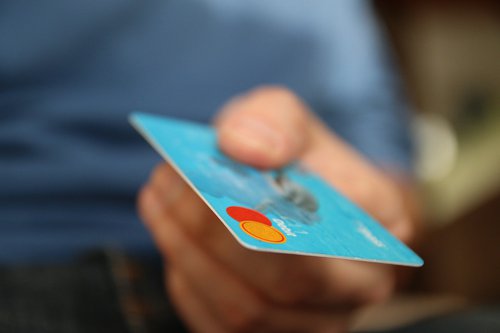
WHAT IS A SECURED CREDIT CARD?
 To understand a secured credit card, let’s start with the basics of all credit cards. That piece of plastic represents an account the offers small loans, anytime you need to pay for something. Need a pizza? You can pay cash out of what you have in the bank OR borrow twenty dollars from your credit card account for that.
To understand a secured credit card, let’s start with the basics of all credit cards. That piece of plastic represents an account the offers small loans, anytime you need to pay for something. Need a pizza? You can pay cash out of what you have in the bank OR borrow twenty dollars from your credit card account for that.
When you swipe or insert, the credit card company pays the pizza purveyor and effectively issues you a pizza loan. If the credit card balance is paid in full on or before the due date, there is no interest on your borrowing and the card acts like a “purchase consolidator,” or a way to add up all your purchases and defer paying for them until later.
If you choose to NOT pay off the balance of all your purchases made in a given month, the card issuer begins to charge interest on the amount that wasn’t paid off. This is where the trouble starts- when you see a “minimum payment due” that is a tiny fraction of what you actually owe, it’s all too tempting to skip paying the entire amount and go for the fraction.
Who Can Borrow?
Since credit card purchases are loans, the next thing to understand is the two conflicting motivations of issuers.
The motivation that encourages issuers to loan money is the hope of profits through fees and interest. This motivation pushes issuers to approve cards more freely than might be appropriate.
The motivation that discourages issuers from loaning money is the fear of loss. After all, there is no guarantee that you will ever pay for that pepperoni pie. This situation is not as risky as it sounds because credit card issuers have a couple of goons to get you to pay up. One of these enforcers is the credit bureau system.
Risk Measurement by Credit Bureaus
By tracking the behavior of customers, issuers have excellent knowledge of how likely it is that they will get paid. Millions of customers are tracked and surprisingly accurate mathematical models are constructed. Some customers will unexpectedly lack the ability to pay, often due to misfortune like job loss or medical emergencies. Other customers will do better than expected and kill off their debt as soon as possible. While each individual may not be completely predictable, the group (made up of millions of customers) is very predictable.
This system works by tracking past behavior, which means that there are two types of customers that cause the most concern for issuers; 1) individuals who have a history of poor payment performance, 2) individuals who have no history at all of any repayment of debt, even for a utility or mobile phone bill.
Card issuers- usually banks- are so certain that there will be times they can charge you interest on a credit balance that they offer cash back, airline miles and other rewards. It’s a volume business and competition for your money is fierce.
Secured Credit
For customers that have bad repayment history or no history, credit card issuers may offer credit if they can control risk. This is done by securing the charged amount through a linked savings account. Credit card issuers still want to make money, even if it’s only a little!
If the credit customer wants a $1000 credit limit, meaning that they can’t borrow more than that, then $1000 must be deposited into the savings account, which is held to guarantee against loss.
Sounds like Borrowing My Own Money?
Honestly, it is. But it may still make sense
A secured credit card functions like any other credit card. It is reported to the credit bureaus – both good news and bad news – like any other credit card. This allows the customer to establish a history of successfully managing credit. Paying bills on time and using only a reasonable percentage of the credit limit (instead of maxing out all their cards) are the two most important habits.
If good habits continue, the credit bureau rating (FICO score) will continue to rise. After some time, FICO will rise to the point that the customer is no longer a high risk and no longer needs secured credit.
A Temporary Measure
The purpose of a secured credit card is to improve credit to the point where the customer can move to a conventional credit card. Because of this, there are two important factors to consider when selecting a card.
1. Is it easy to convert to a conventional credit card with the issuer?
2. Are the fees low?
Secured credit cards are typically bare-bones offerings. No points. No exclusive events. No perks of any kind. That’s fine. The purpose is credit rehabilitation. If a secured credit account is treated responsibly, it can be a step towards a better financial position.